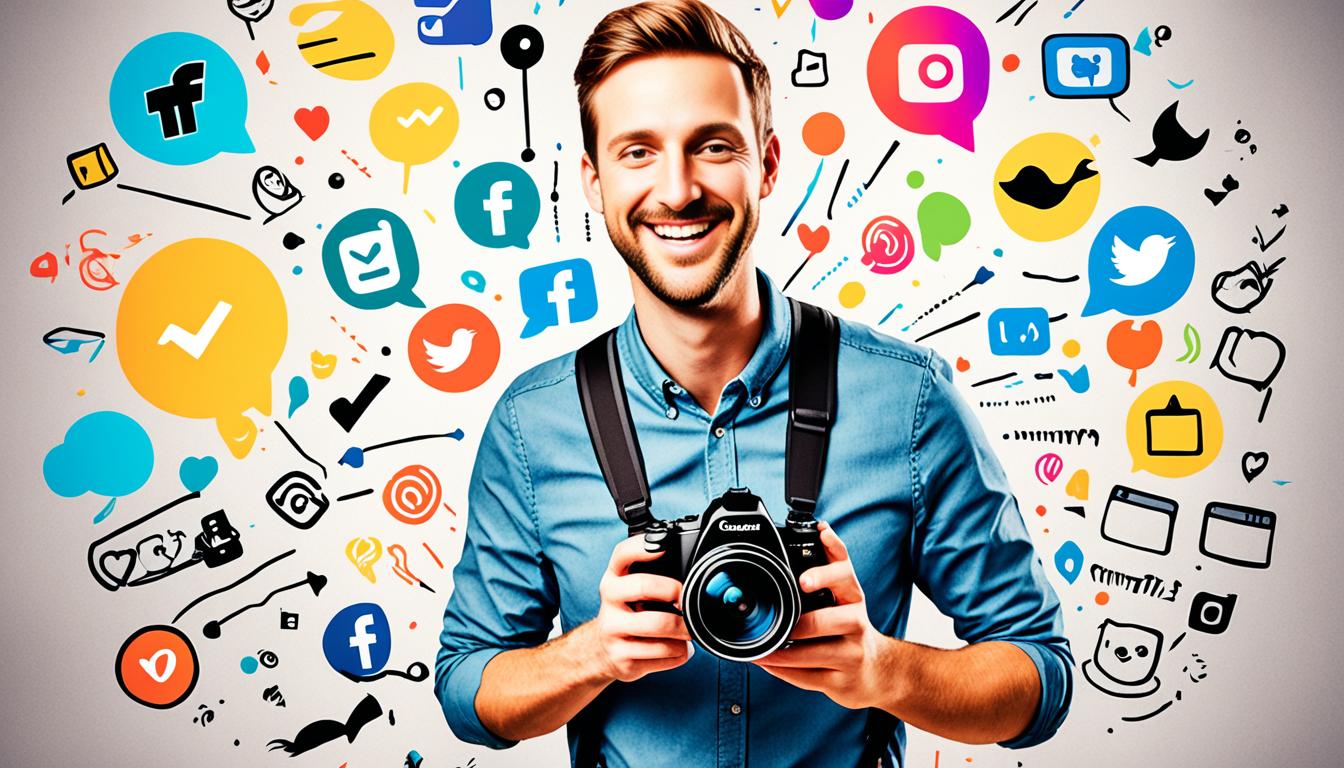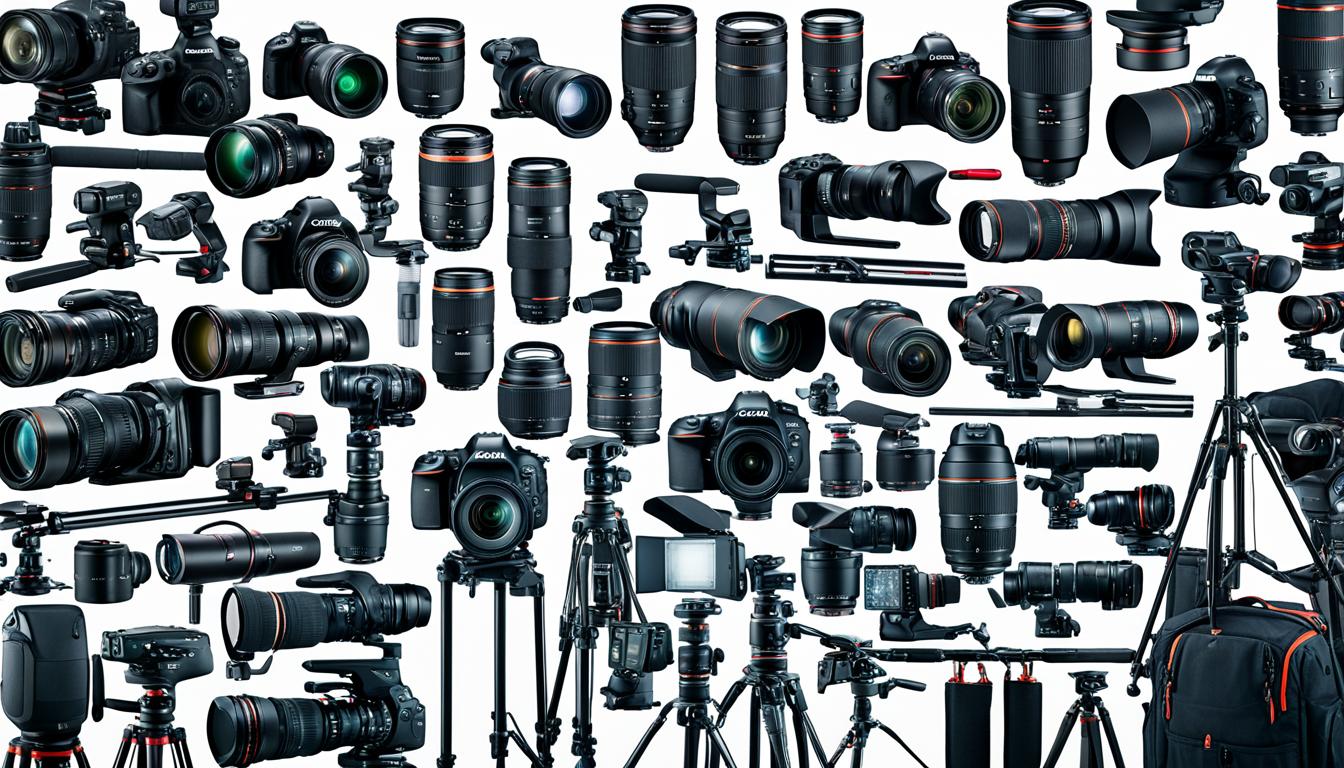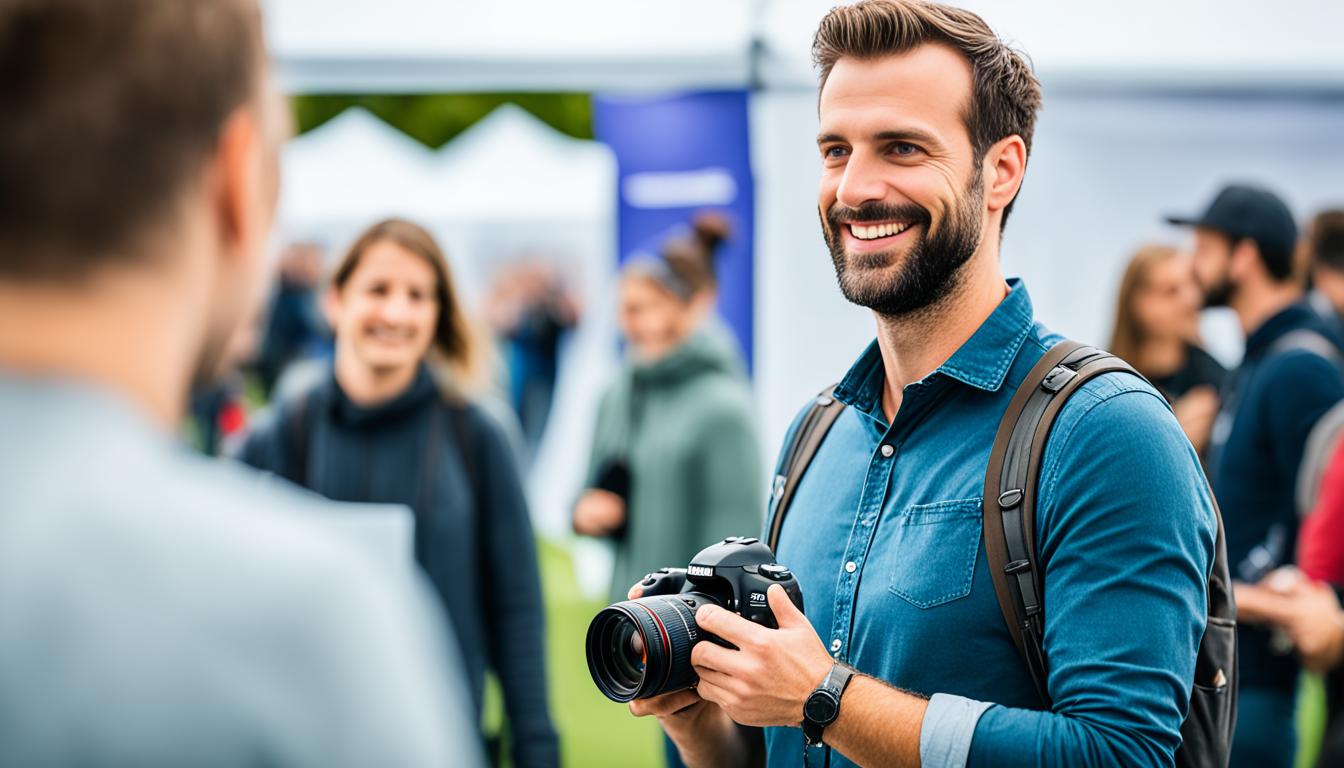Welcome to our guide on Social Media and Event Photography! In today’s digital age, social media has become an essential tool for photographers to showcase their work and engage with their audience. Whether you’re a professional photographer or an enthusiast, knowing how to effectively share and tag your event photos on social media can have a significant impact on your online presence. In this article, we’ll share some best practices and tips to help you maximize the reach and engagement of your event photos.
When it comes to sharing your event photos on social media, it’s important to consider the platform you’re using and the audience you want to reach. Each platform has its own strengths and demographics, so targeting the right audience is key. Additionally, creating captivating content and using hashtags strategically can help your photos gain visibility and generate interest among your target audience.
Now let’s dive into some specific tips and strategies to enhance your social media presence and make the most out of your event photos!
Key Takeaways:
- Target the right audience on different social media platforms.
- Create captivating content that appeals to your audience.
- Use hashtags strategically to increase the visibility of your event photos.
- Engage with influencers and speakers to expand your reach.
- Maintain brand consistency across all social media platforms.
Prioritizing Reach and Connection
Before the event, it’s crucial to prioritize reach, connection, and anticipation through our social media strategy. By understanding the demographics of our target audience and our event, we can concentrate our efforts on the platforms that will have the most impact.
“Understanding our target audience and event demographics helps us to focus our social media efforts strategically.”
When it comes to professional events, LinkedIn is the ideal platform to engage with our target audience. Its professional networking environment allows us to connect with industry leaders, share valuable insights, and create a buzz leading up to the event.
For image-oriented events, Instagram is the go-to platform. With its visually captivating nature, we can showcase our event photos, engage with a younger audience, and leverage popular photography hashtags to expand our reach.
https://www.youtube.com/watch?v=jiUY3rZeRDE
Demographics Matter
Understanding the demographics of our target audience helps us make informed decisions about which platforms to prioritize. For events targeting older demographics, Facebook remains a reliable choice. With its user-friendly interface and robust community features, we can foster engagement and build meaningful connections with event attendees.
Conducting thorough audience research and competitor analysis provides valuable insights into which platforms our target audience frequents the most. By aligning our social media strategy with the interests and behaviors of our target audience, we can optimize our reach and ensure maximum exposure for our event.
Creating a Memorable Event Hashtag
A memorable and consistent event hashtag serves as a unified thread that connects our online community and increases reach. By encouraging event participants to use the hashtag in their posts, we can foster a sense of belonging and community.
When creating an event hashtag, it’s essential to keep it concise, easy to remember, and relevant to our event. This allows for easier discoverability and encourages participants to engage in conversations related to the event.
| Platform | Target Audience | Main Features |
|---|---|---|
| Professional audience | Networking, industry insights, B2B connections | |
| Image-oriented audience | Visual content, hashtags, engagement | |
| Older demographics | Community, user-friendly interface, engagement |
Engaging Influencers and Speakers
When it comes to expanding your reach and building a strong presence on social media, engaging influencers and speakers can be a game-changer. By strategically researching and connecting with individuals who have influence over your target audience, you can tap into their established networks and gain valuable exposure for your event.
To begin, it’s important to conduct thorough research to find influencers who align with your event’s theme or target audience. Look for individuals who have a significant following and actively engage with their audience. This will ensure that their endorsement reaches a large and receptive audience.
Reach out to influencers with a personalized message explaining how their expertise or interests align with your event. Emphasize the potential benefits of collaborating, such as increased visibility and the opportunity to reach a new audience. By building a genuine and mutually beneficial relationship, you can create a foundation for long-term partnership and collaboration.
Quoting and Engaging with Influencers
“Working with influencers who genuinely align with your event can bring invaluable exposure and credibility. Their support and endorsement can effectively engage your target audience and elevate your event’s brand. When quoting or engaging with influencers, remember to tag them in your posts or stories and provide valuable content that they would be happy to share with their network.”
– Sarah Thompson, Social Media Expert
In addition to influencers, it’s essential to leverage the popularity and expertise of your event speakers. Collaborate with speakers to create compelling content that they will be eager to share with their own networks. Their endorsement and support will significantly expand your reach and enhance the credibility of your event.
While engaging with influencers and speakers, it’s crucial to maintain brand consistency across all social media platforms. This includes using consistent colors, logos, and tone of voice to enhance brand recognition and ensure a cohesive and professional presence.
By engaging influencers and speakers, you can tap into their reach and expertise to effectively expand your event’s audience and elevate its brand. Remember to research, build relationships, and maintain brand consistency to maximize the impact of this strategy.
Providing Valuable and Engaging Content
In the world of social media, bombarding your audience with sales messages is not an effective strategy. Instead, we need to focus on providing valuable and engaging content that interests and excites our followers. By adopting the right content strategy, we can create a buzz around our event and ensure optimal engagement from our audience.
Teaser Posts: Generating Excitement and Anticipation
One effective way to generate excitement and anticipation for our event is through teaser posts. These posts act as a sneak peek, offering a glimpse of standout images or short videos that capture the essence of our event. By sharing these teaser posts, we gradually build up interest among both new and existing fans, creating a sense of anticipation and generating hype.
Take a look at this standout image that showcases the vibrant energy of our upcoming event:

Finding the Right Balance: Promotional Content and Informative Posts
While it’s important to promote our event, it’s equally essential to strike a balance between promotional content and informative posts. By providing our audience with valuable and relevant information related to our event, we can foster engagement and keep our followers interested.
“Content is king, but context is queen.” – Gary Vaynerchuk
Informative posts can include industry insights, tips and tricks, or behind-the-scenes glimpses into the preparation of our event. These posts not only showcase our expertise but also establish us as a reliable source of information in our industry.
Utilizing Sales Messaging Wisely
Incorporating sales messaging into our social media strategy requires careful consideration. While it’s essential to promote our event, we must do so in a way that resonates with our audience. Instead of bombarding them with direct sales messages, we need to focus on creating compelling content that indirectly promotes our event. For example, we can highlight the unique experiences that our event offers, share testimonials from past attendees, or showcase the benefits of attending our event.
Engaging and Interacting with Our Audience
To maximize the impact of our content, it’s crucial to engage and interact with our audience. Responding to comments, asking questions, and encouraging participation creates a sense of community and fosters a deeper connection with our followers. By actively listening to our audience’s feedback and incorporating their suggestions, we can continuously improve and tailor our content to meet their needs and interests.
Comparing Content Strategies
| Content Strategy | Advantages | Disadvantages |
|---|---|---|
| Teaser Posts | Generate excitement and anticipation for the event | May not provide detailed information about the event |
| Informative Posts | Showcase expertise and establish credibility | May not directly promote the event |
| Sales Messaging | Highlight unique experiences and benefits of attending | Direct sales messages may be less effective |
By implementing a well-rounded content strategy that incorporates teaser posts, informative content, and thoughtful sales messaging, we can provide valuable and engaging content that resonates with our audience. This approach will not only increase our event’s visibility but also foster a deeper connection with our followers, leading to a successful and memorable event experience.
Leveraging Social Media During and After the Event
During the event, livestreaming key moments and using event hashtags prominently can increase engagement and promote real-time interactions with attendees. By harnessing the power of livestreaming, you can bring your event to a wider audience, creating a sense of excitement and exclusivity. Whether it’s a keynote speech, a panel discussion, or a live performance, livestreaming allows you to connect with virtual attendees who couldn’t be there in person.
https://www.youtube.com/watch?v=KFMDkNGgkrQ
In addition to livestreaming, utilizing event hashtags is crucial for hashtag visibility and encouraging social media engagement. Create a unique and memorable hashtag for your event and make sure to prominently display it throughout the venue and in all your promotional materials. This will not only help attendees easily find and share event-related content but also enable you to track and measure its impact.
During the event, set up dedicated photo booths or interactive installations that encourage attendees to capture and share their experiences using the event hashtag. This creates a sense of community and increases the visibility of your event on social media. These shared photos and moments act as valuable social proof, showcasing the excitement and enthusiasm surrounding your event.
“Livestreaming and event hashtags allow us to extend the reach and impact of our events. It’s incredible to see attendees and virtual participants engaging with our content in real-time and sharing their experiences with their social networks.” – Samantha Johnson, Event Coordinator
After the event: Repurposing event footage and sharing testimonials
After the event is over, don’t let the momentum fade away. Repurpose event footage into compelling content such as videos and testimonials. Create highlight reels capturing the best moments, key insights, and attendee reactions. These videos can be shared across social media platforms, enticing people to relive the event and generating excitement for future events.
Testimonials are also a powerful tool to leverage after the event. Reach out to attendees, speakers, and sponsors, and ask them to share their thoughts and feedback. By sharing testimonials on your social media platforms, you can enhance visibility, build credibility, and encourage others to attend your future events.
“The testimonials we received after our last event were incredibly valuable for promoting our brand and future events. The positive feedback and personal stories shared by attendees helped create a sense of community and trust.” – Mark Thompson, Marketing Manager
Leveraging Social Media During and After the Event
| Benefits | How to Leverage |
|---|---|
| Increased engagement | Livestream key moments |
| Hashtag visibility | Prominently display event hashtags |
| Community building | Set up photo booths and encourage attendees to share content using event hashtags |
| Repurposing event footage | Create videos highlighting event highlights and attendee reactions |
| Testimonials and social proof | Share testimonials from attendees, speakers, and sponsors |
Choosing the Right Social Media Platforms for Photographers
For photographers, it’s crucial to select the right social media platforms to effectively showcase their work, build a loyal following, and connect with their target audience. Different platforms offer unique features and benefits that cater to photographers’ specific needs and goals. Let’s explore some of the popular social media platforms that photographers can leverage:
Instagram is a go-to platform for photographers, thanks to its visual focus and user-friendly interface. With its extensive photography community and powerful editing tools, it offers an ideal platform for sharing stunning images, engaging with enthusiasts, and gaining exposure.
Tumblr
Tumblr’s blogging format provides photographers with a space to share their work accompanied by in-depth captions. This platform encourages community-building and invites enthusiasts to dive deeper into the meanings and stories behind each photograph.
Behance
Behance, a professional portfolio platform, allows photographers to showcase their best work to a global audience. By curating a visually appealing portfolio, photographers can attract attention from potential clients, collaborators, and industry professionals.
Pinterest offers photographers a visual discovery platform where they can share and discover inspiring imagery. By organizing their work into boards or collections, photographers can attract an engaged audience searching for inspiration and aesthetic ideas.
Facebook remains an essential platform for community building and client engagement. With its vast user base and versatile features, photographers can share stories, participate in groups, and interact with their followers on a more personal level.
YouTube & TikTok
YouTube and TikTok provide photographers with unique opportunities to showcase their creativity through video content. Whether it’s behind-the-scenes footage, tutorials, or showcasing their portfolio, these platforms allow photographers to engage with an audience that appreciates dynamic and visually compelling content.
Flickr
Flickr continues to be a beloved platform for serious photographers. With its strong photography community and emphasis on preserving image quality, photographers can gain exposure, feedback, and connect with fellow enthusiasts who share their passion for photography.
By understanding the strengths and advantages of each platform, photographers can strategically select the ones that align with their goals and target audience. It’s important to present a consistent brand image across platforms and tailor the content to the unique features and preferences of each platform. With a thoughtful and targeted social media approach, photographers can effectively showcase their talent, build a strong online presence, and attract the right audience.

| Platform | Main Features |
|---|---|
| Visual focus, user-friendly interface, extensive photography community | |
| Tumblr | Blogging format, in-depth captions, community-building |
| Behance | Professional portfolio platform, global exposure |
| Visual discovery, organizing work into boards | |
| Community building, client engagement | |
| YouTube & TikTok | Opportunities for video content, dynamic engagement |
| Flickr | Strong photography community, image quality preservation |
Conclusion
Social media has revolutionized the way photographers can showcase their work and connect with their audience. By following best practices and choosing the right platforms, photographers can elevate their online presence and build a community of engaged followers.
One of the key content ideas for photographers is to showcase their portfolio. Sharing high-quality images, whether it’s a series of breathtaking landscapes, stunning portraits, or captivating street photography, allows photographers to captivate their audience and highlight their unique style.
In addition to showcasing their portfolio, photographers can also engage their audience by sharing behind-the-scenes content. Whether it’s a glimpse into their creative process, a behind-the-scenes video showing the setup for a shoot, or a story about a memorable photography adventure, these personal and authentic moments help build a connection with the audience.
Providing photography tips and featuring client stories are also effective ways to create engaging content. Sharing valuable insights and practical advice not only establishes photographers as experts in their field but also provides their audience with actionable tips to improve their own photography skills. Featuring client stories and testimonials showcase the photographer’s professionalism and the impact their work has on their clients’ lives.
With a strategic and consistent approach to social media, photographers can enhance their brand, establish their expertise, and build meaningful connections with their audience. By leveraging the power of social media, photographers have the opportunity to reach a wider audience, inspire others with their work, and ultimately grow their photography business. So, embrace the potential of social media platforms, experiment with different content ideas, and start building engagement with your followers today!
FAQ
What are some best practices for sharing event photography on social media?
To maximize the impact of your event photos on social media, it’s important to target the right audience on different platforms, create captivating content, and use hashtags strategically. Conduct audience research, analyze competitor engagement, and create a memorable event hashtag to increase reach and engagement.
How can I engage influencers and speakers to expand my reach?
Reach out to influencers who align with your event’s theme or target audience. Build a mutually beneficial relationship by offering them value and engaging with their content. Additionally, create content that your speakers will be happy to share with their network, leveraging their popularity to increase visibility and engagement.
Why is brand consistency important in my social media strategy?
Maintaining brand consistency across all social media platforms ensures that your audience recognizes and remembers your brand. By using consistent colors, logos, and tone, you enhance brand recognition, build trust, and create a cohesive brand experience for your followers.
How can I provide valuable and engaging content without overwhelming my followers?
Instead of bombarding your audience with sales messages, focus on providing content that interests and excites them. Use teaser posts to generate anticipation for your event by sharing standout images or short videos. Balancing promotional content with engaging and informative posts will ensure optimal engagement.
How can I leverage social media during and after the event?
During the event, livestream key moments and use event hashtags prominently to increase engagement and promote real-time interactions with attendees. Encourage event participants to share their experiences with the event hashtag by setting up photo booths and using physical signage. After the event, repurpose event footage into compelling content such as videos and testimonials to further enhance visibility and engagement.
Which social media platforms are best for photographers?
Instagram is a go-to platform for photographers due to its visual focus and user-friendly interface. Tumblr’s blogging format allows for in-depth captions and community-building. Behance provides a professional portfolio platform, while Pinterest offers visual discovery and inspiration. Facebook remains essential for community building and client engagement. YouTube and TikTok present unique opportunities for video content, and Flickr continues to be a beloved platform for serious photographers.
How can photographers use social media to build their online presence?
Photographers can showcase their work, build a following, and connect with their target audience by following best practices and choosing the right platforms. They can create compelling content that resonates with their audience, such as showcasing their portfolio, sharing behind-the-scenes content, providing photography tips, and featuring client stories. With a strategic approach to social media, photographers can enhance their brand, establish their expertise, and establish meaningful connections with their audience.
How can I legally share and tag event photos on social media?
When sharing and tagging event photos on social media, it’s crucial to understand the legalities of event photography contracts and copyrights. Ensure that you have permission from the photographer or event organizer before posting any photos. Respect intellectual property rights and avoid any potential legal issues by obtaining proper authorization.




